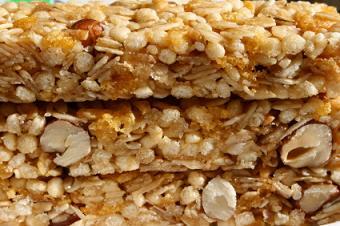
To best understand the components of an insulin resistance diet, it is helpful to understand the mechanics of insulin itself. The following information will provide you with both so you can decide for yourself if a dietary change is a necessary step for managing your health.
What is Insulin?
Insulin is a hormone that is produced in the pancreas gland, specifically by the cells called the islets of Langerhans. The level of sugar or glucose flowing in your bloodstream determines the amount of insulin to be made. The rate of speed at which sugar hits your bloodstream also determines the rate of speed insulin is made and dumped into the bloodstream. Once it is gallivanting around in the blood, its sole purpose is to hook up with the glucose molecules and carry them off to the various cells of the body for energy.
The Resistance
As you may see from the brief explanation above, insulin plays a critical role in energy production. It is also extremely important for the removal of sugar from the blood. Too much sugar running wild in the blood, also known as hyperglycemia, is damaging for many organs and functions of those organs, including the heart and kidneys. Insulin resistance, often referred to as prediabetes, occurs when the hormone itself is not performing its jobs efficiently. While there are many reasons for malfunction, insulin resistance is specifically a condition where the body is unable to use the insulin it produces. In other words, it has nothing to do with the lack of insulin as sometimes the condition causes overproduction, but rather an immunity to it.
Basics of an Insulin Resistance Diet
A diet to help individuals with insulin resistance is similar to a diabetic diet. Maintaining an appropriate blood glucose level is the primary goal when diet intervention is part of a treatment plan for insulin resistance. Since simple sugars and carbohydrates are rapidly absorbed into the bloodstream into glucose, a comprehensive plan related to the number of grams of sugars and carbohydrates is imperative. In addition, meal combining to ensure an adequate quantity of protein, fat and fiber is important to slow down digestion and halt an immediate rise in blood sugar. The exchange system is often followed when using an insulin resistant diet.
Exchange Lists
This system of counting the various grams of food items entails starches, fruits, mild products, vegetables, meat and other protein sources, and fats. For starches, one exchange equals 15 grams of carbohydrate, 3 grams of protein, 0-1 gram of fat, and 80 calories. Similarly, a fruit exchange equals 15 grams of carbohydrates and 60 calories. Meal plans are based on caloric needs given a person's weight, height, gender, age, and activity level. However, the following foods and serving sizes are often part of meal plans for an insulin resistance diet:
- 1 oz. bagel
- 1.5 oz reduced calorie bread (2 slices)
- 1 oz. regular bread such as white, wheat, rye, pumpernickel (1 slice)
- 1/2 english muffin
- 1/2 cup lentils
- 1/2 cup cereal
- 3 tablespoons of wheat germ
- 1/4 cup lowfat granola
- 2 taco shells
- 1 oz. whole wheat crackers
- 1/2 cup corn
- 1/2 cup baked beans
- 1/2 cup green peas
- 1/2 cup mashed potatoes
- 3 oz. baked or boiled potato
- 1 oz. fish
- 2 egg whites
- 1 ounce lean poultry meat
- 1 ounce lean beef
- 1 ounce regular cheese such as Monterey, Swiss
- 1 small apple
- 1 small banana
- 3/4 cup blueberries
- 1/3 cantaloupe
- 1 medium peach
- 2 tablespoons of raisins
- 1 cup fat-free, reduced-fat, or whole milk
The number of exchanges will vary from person to person. Consulting with a nutritionist is beneficial for developing a diet for insulin resistance. You can view a complete exchange list by visiting The National Institute of Health website.
Other Dietary Factors
Fiber is a key component for an insulin resistance diet, as it is for everyone. Soluble fiber takes a long time to be broken down digestively, while insoluble fiber is not digestible whatsoever, but acts as a regulatory tool by slowing digestion of other foods. It is recommended that all individuals attempt to consume at least 25 grams of fiber per day. This may seem like a hefty amount, but consider that an apple or pear with its skin has 4 grams each. Likewise, a handful of almonds will supply you with grams, while one cup of lentils will offer you grams.
Summary

While it is unknown what exactly causes insulin resistance and diabetes, it appears that genetic factors play a part, as well as environmental. Since the former is unchangeable, it is critical to take a good hard look at the latter: your environment. By specifically, and critically, looking at what you are surrounding yourself with in terms of healthy practices, you will be better equipped to change what is needed. There is no doubt that diet and physical activity play a role in the management of insulin resistance. In fact, this prediabetic state is reversible. Discussing your options with your medical team is the best place to start. If weight loss is necessary, it is well-studies that losing just 10% of your weight can greatly enhance your insulin performance, energy levels, and the way your pants feel. There is also an informative book available dedicated to the this type of diet called The Insulin-Resistance Diet.







